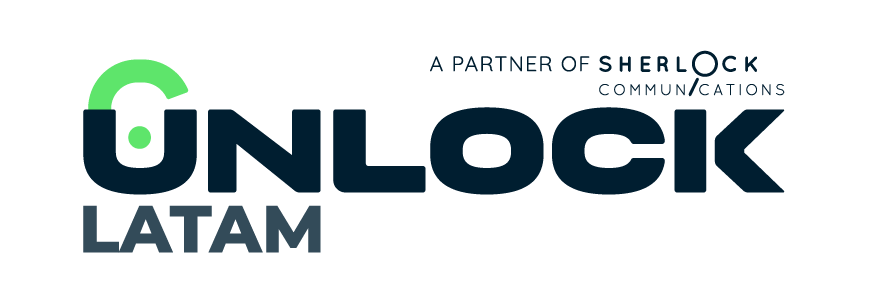Meaning of cadence in business: the ideal tool to surf ups and downs
Turbulence is inevitable in the world of outbound lead generation. There are times of greater tranquility and prosperity and times when nothing happens as planned. But there are good tools to manage the ups and downs expertly and come out on top when the shocks begin. That is when it is important to understand the meaning of cadence in business.
It is about planning and structuring the process, preventing and acting on the different moments of the sales cycle. We can optimize the use of resources and improve conversion rates if we rely on this way of approaching the business.
Meaning of cadence in business: the art of managing the trip
Navigating the ups and downs of the sales cycle can be a challenge, but today we know that we can act on that range of motion effectively and thus minimize “collateral damage.”
To navigate the fluctuations inherent to the lead prospecting process successfully, it is essential to have a well-structured cadence. What are we talking about? Cadence in business refers to the pace or frequency at which certain actions, processes, or communications are carried out.
Cadence is the best way to have a compass at hand that allows us to achieve goals with less effort and better results.
Any salesperson knows that lead prospecting can be a smooth road or a real thunderstorm, from initial contact to conversion. The point is what we do with it and what part of the process we can systematize to generate a flow that stimulates and generates confidence in the marketing and sales teams.
The cadence and rhythm
As we said, the sales cycle is a complex process. It involves dips and flows, where potential customers may exhibit varying levels of interest and engagement. Precisely, cadence is essential to manage the peaks and valleys of the sales cycle.
A well-executed cadence defines the pace of your outreach efforts, ensuring a harmonious and consistent communication flow.
It refers to a carefully planned and structured sequence of touchpoints and interactions with prospects in the context of generating outbound leads. It’s not just about the number of interactions: it’s about the timing and relevance of those interactions.
Why cadence is important in business
It is crucial in several aspects within a company for the following reasons. First, establishing a cadence provides consistency and predictability in business operations. This allows teams to anticipate and plan activities, leading to greater predictability in results.
In addition, it favors the optimization of the workflow: a well-defined cadence helps to optimize the workflow. Determine deadlines to complete tasks and processes, avoiding unnecessary delays and maximizing efficiency.
By the way, a regular cadence of communication within the company and with clients helps keep everyone informed, minimizing misunderstandings and facilitating better collaboration between teams and departments.
Cadence, monitoring, and evaluation
Cadence is also essential for monitoring and evaluation. Setting specific deadlines and times to review progress allows you to quickly identify problems and make adjustments when necessary.
It is also important for generating expectations both inside and outside the company. Customers, partners, and employees know when to expect updates, deliveries, meetings, etc., which helps maintain a transparent and trusting relationship
The key to success in this way of managing the sales cycle is adaptation and agility. While cadence provides structure, it also allows for flexibility. It is essential that it can adjust to the changing needs of the business and the market.
Advantages Of the cadence in the sales cycles
- When sales are going well and people are really interested, it’s important to do things consistently. That keeps the momentum going and reinforces the idea that you are committed to meeting their needs. Constant follow-ups build trust and facilitate a smoother journey through the sales funnel.
- Each potential customer may have unique preferences, objections, or requirements. A well-designed cadence allows us to adapt our communication and our service to that prospect, guaranteeing a more fluid and personalized experience, which results in more and better sales.
- Every salesperson knows that potential customers can get cold or numb. It is one of the lowest points of the sales cycle. A well-structured cadence includes strategies for re-engaging with these potential customers.
- With a well-designed cadence, we can better adapt to the fluctuations of the sales cycle. During periods of greater customer engagement, it advises us to increase the frequency of your touchpoints; At the same time, in less bright times, it is a good compass to understand that we must take our foot off the accelerator and reduce the frequency, to avoid overwhelming and give space to evaluate.
The benefits of an effective cadence plan
A cadence that delivers relevant, personalized interactions increases your chances of converting leads. The results are compelling because the constant and personalized outreach keeps prospects interested throughout the sales cycle, increasing their commitment.
In short, a well-designed cadence allows you to contact prospects at the right time, with the right message and with the best possible proposal, adapted to their needs.
At every step, we will have good metrics to track the performance of each touchpoint and interaction, adjusting efforts in favor of conversion. The key is planning and persistence: it is essential in a convincing cadence.
Mastering Outbound Sales: Strategies for Predictable Revenue Growth
Mastering Outbound Sales: Strategies for Predictable Revenue Growth Nobody said it better than Aaron Ross, author of Predictable Revenue: “You want growth that doesn’t require guessing, hope, and frantic last-minute...
The Role of Sales Development Representatives (SDRs) in Predictable Revenue
The Role of Sales Development Representatives (SDRs) in Predictable Revenue Sales Development Representatives (SDRs) play a crucial role in the implementation of the "Predictable Revenue" framework, initially conceptualized by Aaron...
B2B prospecting: finding high-quality leads
B2B prospecting: finding high-quality leads Although there are very common concepts among those of us who work in different areas of marketing, more than once we take for granted that...



